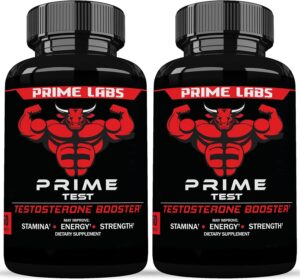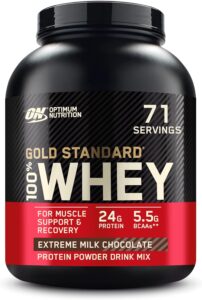
The clear liquid diet is a medically prescribed dietary regimen often used in various healthcare settings. This diet consists solely of liquids that are transparent and free of any solids. Its primary purpose is to ensure hydration and provide a minimal amount of energy while keeping the digestive system free of residue. This article will delve deeply into the clear liquid diet, including its uses, benefits, limitations, and what it entails.
Definition and Purpose
A clear liquid diet is composed of fluids and foods that are transparent at room temperature. These can include water, broth, certain juices, and gelatin. The diet is typically used for short-term purposes due to its restrictive nature, focusing on maintaining hydration, providing electrolytes, and offering some caloric intake without burdening the digestive system.
Common Uses
The clear liquid diet is often prescribed in several scenarios:
- Preoperative and Postoperative Care: To reduce the risk of complications, patients are often placed on a clear liquid diet before and after surgery, especially surgeries involving the gastrointestinal tract.
- Diagnostic Procedures: Before certain tests, such as colonoscopies or endoscopies, a clear liquid diet helps ensure the digestive tract is clear of any residue.
- Acute Illnesses: For conditions like gastroenteritis or acute pancreatitis, where a complete digestive rest is necessary, a clear liquid diet can be beneficial.
- Transition Diet: When transitioning from a period of fasting or a more restrictive diet back to regular food intake, the clear liquid diet serves as an intermediate step.
Components of a Clear Liquid Diet
The following items are typically allowed on a clear liquid diet:
- Water: Essential for hydration.
- Clear Broths: Including chicken, beef, or vegetable broth, which provide some nutrients and electrolytes.
- Juices without Pulp: Such as apple, cranberry, or grape juice.
- Gelatin: Plain or fruit-flavored gelatin, excluding any with added solids.
- Tea and Coffee: Without milk or cream, though sugar and lemon are usually permitted.
- Sports Drinks: These can help replenish electrolytes.
- Popsicles: As long as they do not contain pieces of fruit or other solids.
Nutritional Content
The clear liquid diet is inherently low in calories, protein, and essential nutrients. Its primary components provide simple carbohydrates and sugars, which offer minimal energy. While broths can supply some electrolytes like sodium and potassium, overall nutritional intake is insufficient for long-term health maintenance.
Implementation and Guidelines
Medical Supervision
It is crucial for individuals on a clear liquid diet to be under medical supervision, especially if the diet is to be followed for more than a few days. Prolonged adherence to this diet can lead to nutritional deficiencies, muscle wasting, and other health issues.
Duration of the Diet
Typically, the clear liquid diet is prescribed for short periods, usually ranging from 24 to 48 hours. In some cases, it may be extended to up to a week, but this is rare and requires close medical monitoring.
Transitioning to Solid Foods
Transitioning from a clear liquid diet to more substantial foods should be done gradually. Patients often move to a full liquid diet (which includes milk, smooth soups, and pureed fruits) before reintroducing soft and then regular foods. This step-by-step approach helps prevent digestive upset and allows the gastrointestinal system to adapt gradually.
Benefits and Advantages
Diagnostic and Surgical Preparation
By minimizing residue in the digestive tract, the clear liquid diet ensures that diagnostic tests and surgical procedures are conducted with greater accuracy and safety. For instance, a clear liquid diet can help provide a clear view during colonoscopies.
Digestive Rest
In conditions where the digestive system needs a rest, such as acute pancreatitis or gastroenteritis, the clear liquid diet reduces the workload on the stomach and intestines, aiding in the healing process.
Hydration Maintenance
Ensuring adequate hydration is one of the primary benefits of the clear liquid diet. With an emphasis on fluid intake, it helps maintain hydration levels, which is crucial in medical settings where dehydration could exacerbate health issues.
Limitations and Risks
Nutritional Deficiency
One of the most significant limitations of the clear liquid diet is its lack of essential nutrients. The diet is low in protein, fat, vitamins, and minerals, making it unsuitable for long-term use. Prolonged adherence can lead to deficiencies, muscle loss, and weakened immune function.
Hunger and Fatigue
Due to its low caloric content, individuals on a clear liquid diet may experience persistent hunger and fatigue. The diet does not provide sufficient energy to sustain regular activities, leading to feelings of weakness and lethargy.
Potential for Misuse
While the clear liquid diet can be beneficial when used appropriately, there is potential for misuse. Some individuals might use it for rapid weight loss, which can be dangerous and lead to serious health complications. It is essential that the diet is followed strictly under medical advice.
Special Considerations
Patients with Diabetes
For diabetic patients, maintaining blood sugar levels is a critical concern. The clear liquid diet, with its high sugar content from juices and gelatin, can cause blood sugar spikes. Diabetic patients need tailored adjustments, such as opting for sugar-free alternatives and monitoring blood glucose levels closely.
Children and Elderly
Special care is needed when prescribing a clear liquid diet to children and the elderly. These populations are more vulnerable to nutritional deficiencies and dehydration. Adjustments and close monitoring are necessary to ensure safety and effectiveness.
Practical Tips for Following a Clear Liquid Diet
Planning and Preparation
- Stock Up: Ensure you have all the approved clear liquids on hand. This includes various broths, clear juices, gelatin, and sports drinks.
- Stay Hydrated: Drink small amounts frequently to maintain hydration.
- Variety: Although the options are limited, try to include a variety of allowed items to avoid monotony and ensure a broader range of nutrients within the diet’s constraints.
Monitoring and Adjustments
- Regular Check-ins: Keep in touch with your healthcare provider, especially if you experience any adverse symptoms like dizziness, severe hunger, or signs of dehydration.
- Blood Sugar Levels: For diabetic patients, monitor blood sugar levels regularly and make necessary adjustments to avoid spikes.
- Gradual Transition: When transitioning back to solid foods, do so gradually, starting with a full liquid diet before introducing soft and regular foods.
The clear liquid diet is a valuable tool in medical settings, providing necessary hydration and minimal caloric intake while allowing the digestive system to rest. It plays a crucial role in preoperative and postoperative care, diagnostic procedures, and managing certain acute illnesses. However, due to its restrictive nature and potential for nutritional deficiencies, it must be used under strict medical supervision and for short periods only. Understanding the appropriate use and limitations of the clear liquid diet is essential for both healthcare providers and patients to ensure its benefits are maximized while minimizing risks.










